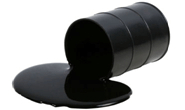Shipping and Logistics

SMU Survey Respondents Flag Fuel Surcharges as Costs March Higher
Written by Michael Cowden
March 27, 2022
Fuel surcharges continue to march higher along with increased steel prices and ballooning costs for raw materials such as ferrous scrap and pig iron.
![]() Case in point: Wheeling-Nippon Steel’s fuel surcharge will increase to 24% effective with shipments on Monday, April 4.
Case in point: Wheeling-Nippon Steel’s fuel surcharge will increase to 24% effective with shipments on Monday, April 4.
“The surcharge will continue to be added to the freight on all invoices until further notice,” the Follansbee, W.Va.-based steel coating mill said in a letter to customers last week.
Wheeling-Nippon is hardly alone in raising fuel surcharges.
NLMK USA earlier this month announced that it would be increasing its fuel surcharge from 42% to 48%. The steelmaker – which operates mills in northwest Indiana and western Pennsylvania – made the increase effective with shipments beginning last week.
And Nucor said earlier this month that it would adjust its fuel surcharges more often in response to record prices.
The big jumps in fuel surchages comes as oil prices have skyrocketed upward from approximately $66 per barrel in November to more than $112 per barrel at the end of last week. Higher fuel costs stem in part from sacntions placed on Russia, one of the world’s largest oil producers, for the invasion of Ukraine.
SMU survey respondents have flagged higher fuel prices as among their primary concerns when it comes to supply chain challenges. Here are a few recent comments they provided when asked whether supply chain issues were getting better or worse:
“Getting worse and getting worse for several reasons. Fuel prices are number one; labor shortages, number two; and global issues, number three.”
“Everything from slitting to freight is getting worse.”
“It’s getting worse: availability of ocean vessels and costs are increasing rapidly. FSC (fuel surcharge) on domestic freight is out of control.”
“Getting worse domestically as truckers get more selective and as fuel surcharges for rail and barge are way up. … Several of the ports are still a major mess, primarily Long Beach (Calif.) but some others too.”
“Trucking is miserable.”
“Trucking is a nightmare.”
“Supply issues are certainly more complicated. … Worse if you have demand you are not prepared to supply.”
By Michael Cowden, Michael@SteelMarketUpdate.com

Michael Cowden
Read more from Michael CowdenLatest in Shipping and Logistics

US Great Lakes iron ore cargoes down notably through May
The Lake Carriers' Association reported a considerable decline in monthly iron ore shipments from US ports on the Great Lakes.

Wittbecker: West Coast port congestion
What's going on in West Coast ports?

Wittbecker: Mexico invests in port capacity despite US tariff troubles
The Mexican government aims to transform Manzanillo into the largest seaport in Latin America, capable of processing some 10 million TEU (20-foot equivalent units) per year by 2030. It is already Mexico's largest port and the third largest in Latin America, handling nearly 4 million 20-foot containers in 2024.

Wittbecker on Aluminum: When do the tariffs reach Main Street?
Containers sailing from China in April are down 15%-20% and Hapag Lloyd says their future bookings transpacific are down 30%.

Wittbecker on Aluminum: US-China trade war clobbers cross-Pacific trade
Container shipping lines have sharply increased blank sailings on Transpacific routes in response to escalating trade tensions between the US and China.
